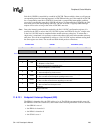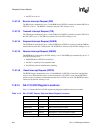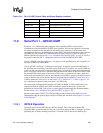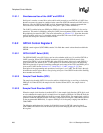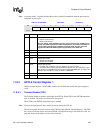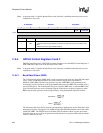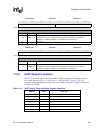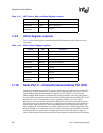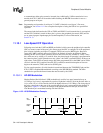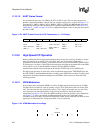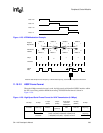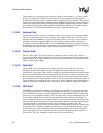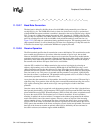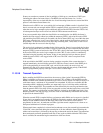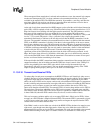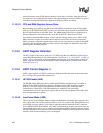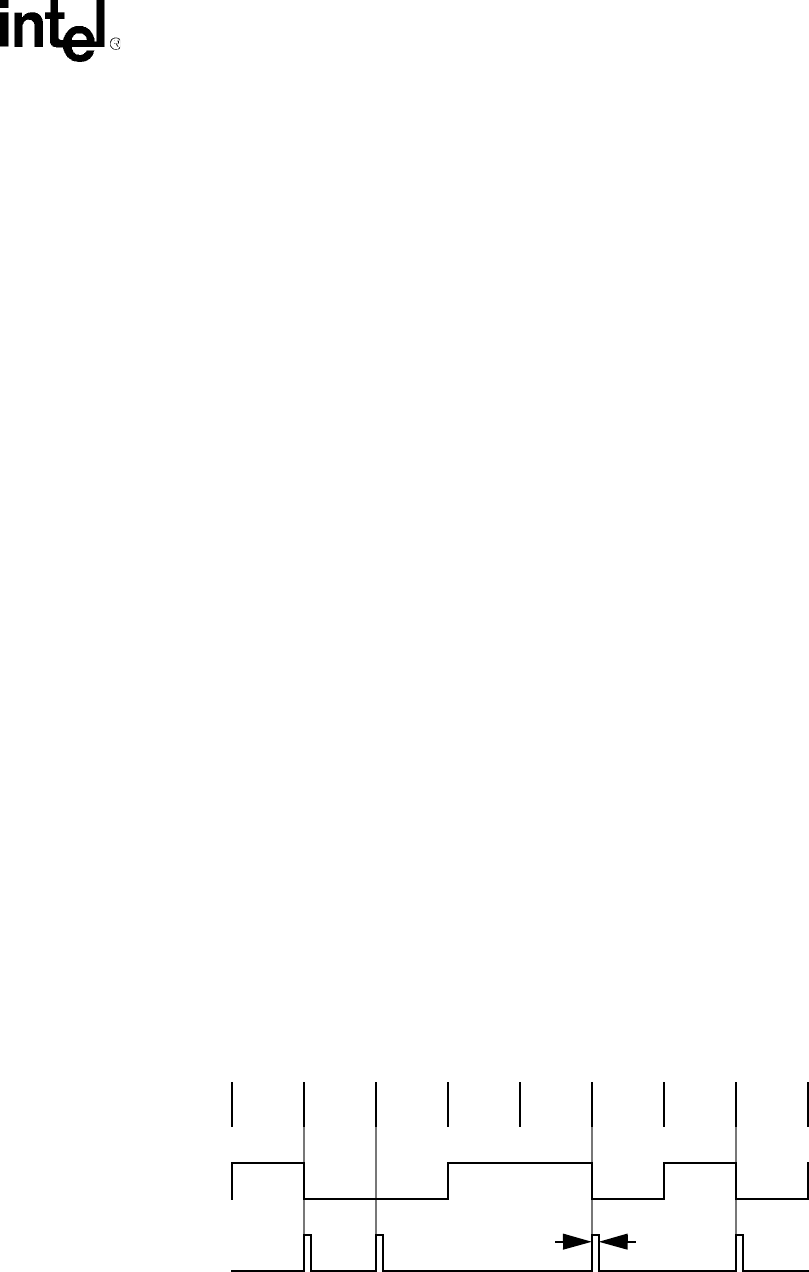
SA-1110 Developer’s Manual 301
Peripheral Control Module
to communicate either using normal or inverted data. Additionally, if IrDA transmission is not
needed, the ICP’s UART can be enabled while disabling the HP-SIR bit encoder for use as a
general-purpose serial port.
Note: Programming and operation of serial port 2’s UART is identical to serial port 3. For more
information, see Section 11.11 for a complete description of using the ICP for low-speed IrDA
operation.
The external pins dedicated to the ICP are TXD2 and RXD2. If serial transmission is not required
and the ICP is disabled, control of these pins is given to the peripheral pin control (PPC) unit for
use as general-purpose input/output pins (noninterruptible). For more information, see
Section 11.13.
11.10.1 Low-Speed ICP Operation
Following reset, both the UART and HSSP are disabled, which causes the peripheral pin controller
(PPC) to assume control of the port’s pins. Reset causes the PPC to configure all of the peripheral
pins as inputs, including serial port 2’s transmit (TXD2) and receive (RXD2) pins. Reset also
causes the UART’s transmit and receive FIFOs to be flushed (all entries invalidated). Before
enabling the ICP for low-speed operation, the user must first clear any writable or “sticky” status
bits, which are set by writing a 1 to each bit. Next, the desired mode of operation is programmed in
the control registers. At this point the user may “prime” the UART’s transmit FIFO by writing up to
eight values, or the FIFO can remain empty and either programmed I/O or the DMA can be used to
service it after the ICP is enabled. Once the ICP is enabled, transmission/reception of data can
begin on the transmit (TXD2) and receive (RXD2) pins.
For low-speed operation, all serial data that is transferred between the TXD2/RXD2 pins and the
ICP’s UART is modulated/demodulated according to the HP-SIR IrDA standard. The IrDA
standard also specifies the frame format that must be used by the UART.
11.10.1.1 HP-SIR Modulation
Hewlett-Packard Serial Infrared* (SIR) modulation is used for low-speed transmission up to
115.2 Kbps. Logic zero is represented by a pulse of light that is either 3/16 of the bit time wide, or
1.6 µs wide (1.6 µs is 3/16 of the bit time for the highest bit rate of 115.2 Kbps). The rising edge of
the pulse corresponds to the start of the zero bit time. Logic one is represented by the absence of
light pulses. Figure 11-22 shows an example of HP-SIR modulation of the byte, 8’b01011001.
Note that the byte is transmitted starting with the LSB first.
Figure 11-22. HP-SIR Modulation Example
Digital
Data
HP-SIR
*
Data
Bit
Value
10011010
3/16 of the Bit Time
LSB
MSB



